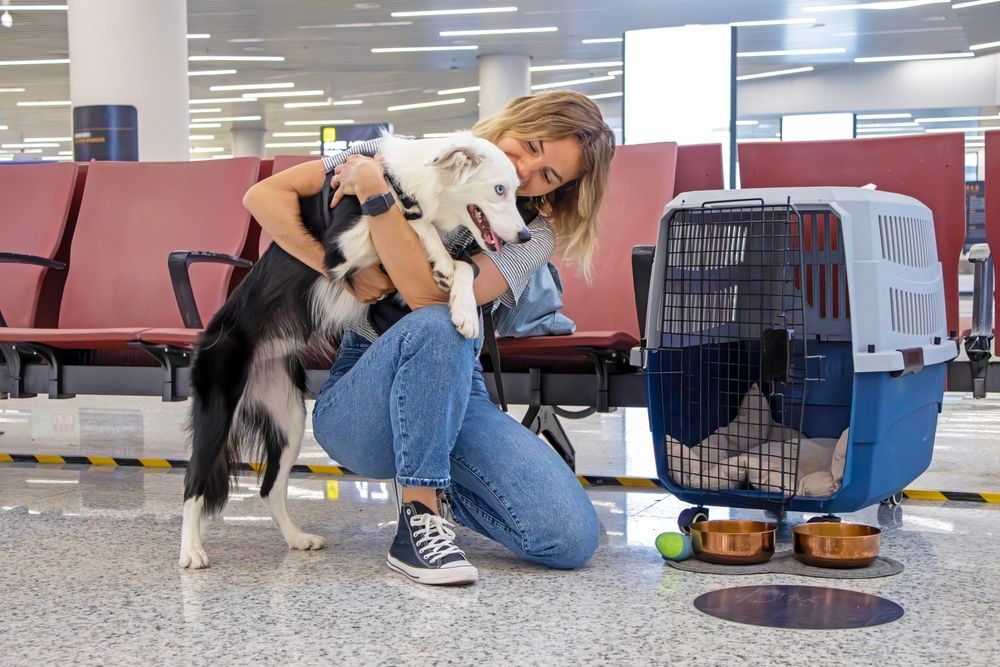Traveling with your pet can be an exciting adventure—yet it also involves careful planning, particularly when it comes to air travel. Unlike a simple road trip crate, an airline-approved pet carrier must meet specific safety and dimension requirements, ensuring your furry friend travels comfortably and within airline rules. Whether you’re taking your cat on a short domestic flight or embarking on a globe-trotting escapade with your small dog, choosing the right carrier is essential. This guide explores key considerations—such as airline standards, size and ventilation, and pet comfort—so you can find a carrier that streamlines your journey and keeps your pet happy.
1. Why a Good Pet Carrier Matters
Why It’s Important
Not all carriers are built for the rigors of an airplane cabin or cargo hold. The right carrier helps reduce stress for both you and your pet by providing a secure, cozy environment. Meanwhile, an airline-approved design ensures you won’t face last-minute rejections at check-in.
Key Benefits of a Quality Carrier
- Meets Airline Standards: Dimensions and construction comply with rules, so you avoid hassles at the gate.
- Comfort and Breathability: A well-ventilated interior and soft floor lining can keep your pet calm during what can be a disorienting experience.
- Durability and Security: Ensures your pet remains contained—no escaping mid-flight—and can handle potential bumps during travel.
Takeaway
If you travel frequently or for long distances, investing in a reliable, airline-friendly pet carrier pays off by minimizing stress, ensuring compliance, and protecting your pet’s well-being.
2. Check Airline Regulations First
Why It Matters
Each airline has distinct requirements for in-cabin pet carriers—regarding size, weight limits, and often design (soft-sided vs. hard-sided). Some carriers also have breed-specific restrictions, especially for snub-nosed animals that might have breathing difficulties.
Steps to Take
- Contact or Research Your Airline: Visit the carrier’s official website or call customer support to confirm up-to-date pet policies, including maximum carrier dimensions and whether your pet can fly in-cabin.
- Confirm Weight Limits: Some airlines enforce weight limits (pet + carrier) that must fit under the seat in front of you.
- Check Hard vs. Soft-Sided Rules: While many airlines allow soft-sided carriers because they can compress under a seat, others might permit certain small hard-sided carriers if they fit.
Takeaway
No matter how great a carrier is, if it doesn’t fit your chosen airline’s guidelines, it’s useless for flying. Always confirm compliance before purchase.
3. Types of Pet Carriers for Airline Travel
Why It Matters
Carriers vary in construction, shape, and added features. Understanding which type suits your pet’s size, temperament, and airline rules makes for smoother boarding and a more pleasant flight.
Common Carrier Types
- Soft-Sided Carriers
- Features: Lightweight, flexible walls, zippered openings, mesh panels for ventilation.
- Pros: Easier to slide under seats, more comfortable for nervous pets due to a cozier interior, often accepted by most airlines.
- Cons: Might not be suitable for very anxious pets that scratch or chew vigorously, since fabric can be less robust than hard plastic.
- Hard-Sided Carriers
- Features: Rigid plastic or fiberglass shell, usually with metal or plastic doors.
- Pros: Extra protection, easy to clean, good for pets who chew.
- Cons: Less give for under-seat stowage; might be heavier to carry.
- Wheeled Carriers
- Features: A handle and wheels for rolling through airports. Some convertible designs allow wearing as a backpack or carrying by a strap.
- Pros: Convenient for navigating terminals with minimal strain.
- Cons: Must check if wheels or handle add extra dimensions impacting under-seat fit.
Takeaway
Soft-sided carriers dominate in-cabin travel due to flexibility and weight. But if your pet’s comfort or security demands a hard-sided approach (and it meets size constraints), that might be a better fit.

4. Sizing and Fit for Your Pet
Why It Matters
Your pet needs to stand up (if not fully, at least turn around comfortably) and lie down with ease inside the carrier. Cramped carriers induce stress, while overly large ones might not fit under the seat or may allow too much movement.
Sizing Tips
- Measure Pet: From nose to base of tail, and from floor to top of head (or ears) in a comfortable position.
- Check Manufacturer’s Guidelines: Each brand often suggests maximum pet weight and approximate measurements.
- Allow Space to Turn Around: A rule of thumb is that your pet should be able to shift position without being squished, yet not so large that they slide around in turbulence.
Takeaway
Aim for a snug but not restrictive fit. Too roomy and your pet may jostle; too tight and comfort is compromised.
5. Ventilation and Comfort Features
Why It Matters
Long flights can be stressful for animals, so ensuring adequate airflow and a soft, inviting interior helps them remain calm. Good ventilation also reduces the chance of overheating or respiratory distress.
What to Look For
- Mesh Panels: Multiple mesh windows allow fresh air circulation. Some carriers have roll-up “privacy flaps” so you can control ventilation and visibility.
- Removable Cushions: A soft, washable pad or fleece mat is often included or can be added, providing extra comfort.
- Pockets and Storage: External pockets for treats, leash, or paperwork can be handy at the airport.
Takeaway
Sufficient ventilation plus a comfortable interior can make a huge difference in how your pet copes with the journey. Keep them cozy and not overheated.
6. Security and Ease of Use
Why It Matters
Fumbling with awkward zippers or risking your pet escaping in a busy terminal is the last thing you want. Safety features and user-friendly designs minimize stress and accidents.
Features
- Durable Zippers: Should lock or clip shut, preventing your pet from pawing them open mid-flight.
- Sturdy Handles/Shoulder Straps: Ensure the carrier’s weight is well-supported. Padded handles ease the strain on your hands.
- Leash Tethers: Some carriers include an internal leash tether, helpful if you need to open the top to calm or feed your pet without them jumping out.
Takeaway
A well-designed carrier with secure closures and comfortable carrying options keeps your pet contained and your transit effortless.
7. Preparing Your Pet for Travel
Why It Matters
Even the best carrier won’t help if your cat or dog is terrified the moment they’re zipped inside. Familiarizing them with the carrier before departure can reduce travel anxiety.
Preparation Steps
- Introduce Carrier Early: Let it sit open in your home, perhaps with treats or favorite toys inside, so your pet associates it with positive experiences.
- Test Rides: If feasible, take short car rides or place them in the carrier for brief periods, gradually increasing duration.
- Calm Aids: Some owners use calming sprays (like pheromones) or minimal sedation (only under vet guidance) if their pet is extremely anxious.
Takeaway
A relaxed pet is less likely to meow, bark, or scratch desperately during the flight. Advance conditioning makes the travel day less stressful for everyone.
8. Budget and Brand Reputation
Why It Matters
Quality carriers range from basic affordable options to premium, feature-laden models. Price alone doesn’t guarantee suitability—sturdiness, comfort, and compliance matter most.
Considerations
- Brand Reputation: Known pet travel brands might have tested durability and better design. Reading real-owner reviews can confirm if handles or zippers are prone to failure.
- Warranty: Some higher-end carriers come with limited warranties, indicating brand confidence.
- Value vs. Cost: Sometimes paying slightly more for an airline-approved carrier that’s well-constructed spares you last-minute drama at check-in or mid-flight malfunctions.
Takeaway
Look for an airline-compliant design from a reputable maker. Saving a few dollars on a flimsy brand might cause bigger headaches, especially under travel stress.
Bringing your pet along for an air journey needn’t be fraught with worry—provided you’ve selected a carrier that meets airline rules, fits your pet well, and offers adequate comfort and security. Start by confirming your airline’s dimensions and weight rules, then consider whether a soft-sided, hard-sided, or wheeled design best suits your situation. Prioritize factors like ventilation, sturdy hardware, and a snug (but not cramped) interior so your pet feels at ease.
A bit of advance training and familiarization with the carrier can also go a long way in helping your cat or small dog approach the trip calmly. Don’t let price be the sole deciding factor: a durable, well-reviewed carrier can pay off in repeated successful journeys—free from last-minute gate rejections or escapes. By planning carefully, you’ll ensure that traveling with your furry friend is a delightful adventure, not a stressful ordeal, letting you both enjoy new sights (and scents) around the globe.




